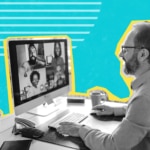Conferences, while a lot of work, are such a fun outlet to connect with other people in the IT community. It’s an opportunity to learn about new technologies, trends, and gain new perspectives around the industry. Some of my favorite memories of past conferences stem from the exhibit hall passport games and morning coffee breaks, mingling with other attendees whose paths you may not typically cross.
Those were the days!
2020’s landscape is vastly different, as are its conferences. In August, our team had the pleasure of participating as a sponsor at SupportWorld Live: A Digital Experience. While we weren’t in Las Vegas making new friends and betting on red, we enjoyed an engaging experience and brought back a wealth of information to our fellow Solarians. Here’s a look at key takeaways from this year’s virtual event.
Accelerated Digital Transformation
This year has thrown its fair share of curveballs. Despite all the unforeseen challenges, IT service and support professionals have worked tirelessly to ensure the business and its employees remain operational. As the pandemic took shape,
organizations had to make rapid decisions to keep their employees safe and keep business operations stable. Adapting to the crisis required flexibility, innovation, and technology. As a result of COVID-19, Microsoft CEO Satya Nadella said, “We saw two years of digital transformation take place in just two months.”
Many of the sessions were centered around optimizing digital resources to make services and support more effective and efficient. While everyone leans into technology to accomplish digitization, we can’t forget people are at the core of this evolution. In the opening keynote, Greg Verdino reminded us people are the disrupters, and over the past six months, we’ve witnessed both a digital and human transformation.
Industry experts shared their experiences and the lessons they learned through various implementations. Many of the conversations were focused on the need to be flexible when refining their processes to align with remote operations, and teams should lean on technology to adapt to changing environments. These shared stories ranged from the use of knowledge articles, customizing the front-end experience for employees, promoting self-service, and more.
As we continue to move
beyond the pandemic, organizations leaning on technology can help close the gap between users and service providers to deliver more seamless and meaningful support.
The User Experience
One of the most popular discussions centered on promoting an outstanding employee experience. Despite the hurdles and physical distance brought on by the pandemic, successful support teams have continued to deliver while maintaining cultural values.
As Jeff Toister noted in his session around customer-focused culture, “Engaged employees deliberately contribute to organizational success.” Fostering a solid
user experience can help unite organizations, especially during our current remote climate. Teams are finding ways to make services accessible and are striving to leave a positive impact, ensure employee’s success, and help breed advocates.
While organizations look to
heighten engagement and employ self-service, it’s paramount they have an accurate pulse on how their users perceive their services and service desk. Nate Brown’s session was focused on the voice of the customer and how service providers have an opportunity to improve service delivery based on user sentiments. Brown summed up the value of the user experience in saying, “If we respect customers’ time—their most valuable asset—and we make it easy for people to do business with us, they’re going to want to continue to do business with us.”
Support teams who successfully marry their digital transformation strategies and solutions to their service management initiatives can deliver sustainable and positive user experiences.
Service and Support Following 2020
In light of the pandemic, many teams have reactively worked to solidify their digital offerings. As we look
beyond 2020 and plan for the future, the path forward will undoubtedly have new terrain. What considerations will teams apply to their service delivery strategies?
One of the subjects that bubbled up at the conference, and seems to be trending outside of the event, is the adoption of cloud-based solutions. Even prior to organizations transitioning to remote work as a result of COVID-19, more teams were
gravitating towards the cloud. As the year continues and we look to 2021, our environments will continue to extend digitally. Teams should strike while the iron is hot and
take advantage of cloud-based platforms to aid in their digital transformation goals.
Paired with cloud-based considerations is the notion of driving value across the business. The need for
IT to co-create and deliver value to their organizations peaked during the pandemic. Service providers across departments have narrowed and refined their focus on what their user deems as valuable, and how they can ensure they’re meeting user expectations. Doug Tedder called this into question during the panel on the service industry in recovery as it relates to value continuity. Tedder challenged organizations to consider the following when reviewing value continuity, “How can organizations ensure there is sufficient value flowing throughout the value stream all the way to the end customer?” As teams look to have valuable interactions and successful delivery of services, they should be collecting ongoing insight and feedback to drive improvements.
We may not know the full scope of what lies ahead, but as many of the sessions proved, we need to remain agile and nimble. As we rely increasingly on technology and digital channels for service and support, there’s an opportunity to drive innovation and new user experiences. IT pros are resilient and will continue to lead the charge through uncharted territory. We are continually learning and improving, taking challenges in stride, and preparing for what’s next.






